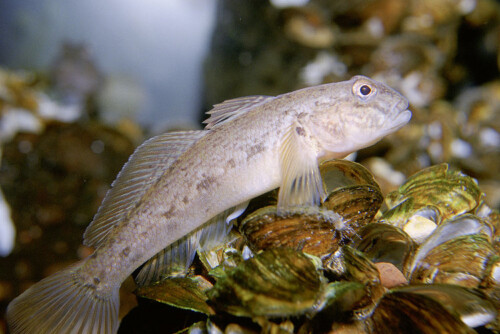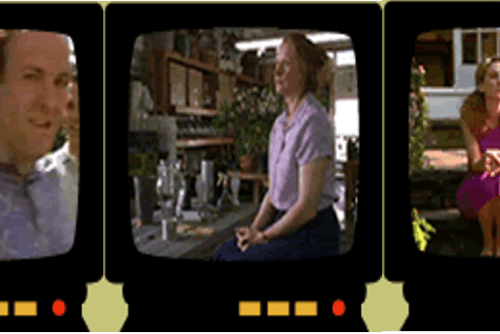Manipulation of Means: Agriculture and Medicine
Grene called this functionalist approach to living materials the “manipulation of means:” since Waddington used the chick as his model animal, let me stay with it as I sketch out the agricultural and medical innovations that followed from his epigenetic research.59 The post-World-War-II scale up in chicken farming adopted the operationalizing and manipulation of biological material grounded in that functionalist approach, generating a model of industrialized agriculture that spread quickly to the food industry. Standardized chickens incubated artificially were grown out in mass poultry houses leased by contract farmers who worked for a vertically integrated global poultry industry and distributed their product through a newly vertically integrated processing, shipping, and grocery industry. Manipulation of processes for maximum efficiency gradually came to characterize the whole chain of agricultural processes, from the inputs (breeding, feed, care) to the outputs (chicken carcasses and poultry by-products, turned back into the agricultural system as feed for chickens and other livestock, as well as dogs and cats). The industry was engaged in a coordinated plan to produce the most “efficient” product: a chicken that produced the most weight for the least cost in feed. The end product was our contemporary industrialized chicken, the Cobb-Vantress Cornish-Rock cross, designed to bulk up to slaughter weight in just six weeks.
In Poultry Science, Chicken Culture, I have offered several instances of the way that the instrumentalization of biological life—in the case of chickens bred, raised, and distributed globally by the poultry industry—has affected non-normate bodies, poor women’s bodies, and colored and colonized bodies.60 Let me just recall some of them briefly here. First, there is the case of people with non-normate bodies (and minds). Dario Dambrosi’s play Days of Antonio, written for the antipsychiatry activist Teotro Patologico, shows how the physical impairment of young Antonio is linked thematically to the abject status of agricultural animals, so that not only is he raised with the chickens, but once he is committed to the mental hospital he comes to identify with a chicken, seeing himself cognitively as well as physiologically as nonhuman. Dambrosi’s play, which was written as in support of the mental health deinstitutionalization reforms inaugurated by the 1979 “Basaglia Law,” recalls the eugenics work of Charles Davenport and Harold H. Laughlin, who carried out studies in chicken breeding as part of their research into animal and human heredity at the Eugenics Record Office in Cold Spring Harbor, New York.
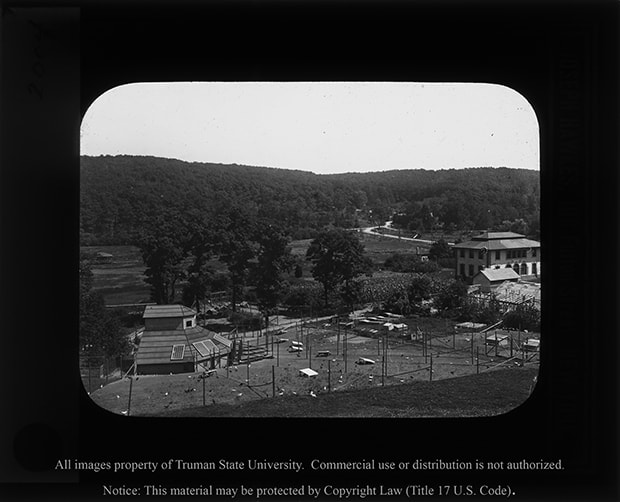
This research ultimately resulted in appalling injustice when Harry L. Laughlin was selected as an expert witness for the defense in the Buck v. Bell case, concerning the “therapeutic sterilization” of Carrie Bell, the “moral imbecile” resident in the Virginia State Colony for Epileptics and the Feeble-minded. Yet Laughlin was hardly an objective expert witness.61 The defense had framed its entire case on his research. As defense lawyer Aubrey Strode explained to Laughlin, “Both in the preparation of the statute and in preparation for the trial of this case we have found your book on ‘Eugenical Sterilization in the United States,’ published by the Psychopathic Laboratory of the Municipal Court in Chicago […] very helpful.”62
Poor women’s bodies, raced and (economically) colonized bodies, also suffer from another aspect of the industrialized poultry industry: the physical and psychological brutality of the killing floor and the assembly line method of large-scale poultry processors, as well as the underground smuggling that brings those low-pay workers to the American South where they labor at their own risk for large-scale corporations such as Tyson Foods. John Fiege’s film Mississippi Chicken and Cedric Chatterly and Linda Rouverol’s stunning photo essay on the work of Maine poultry processor Linda Lord demonstrate the physical, mental, and social injuries inflicted by large-scale slaughterhouses and poultry processing plants.63
Less well-appreciated is the fact that a parallel industrialization has occurred in human biomedicine, drawing together public institutions that administer health care services and businesses serving the health care industry, from pharmaceutical corporations and medical equipment manufacturers to physicians, and from insurance companies and “wellness centers” to hospitals.64 While the medicalization of life occurs at all levels, as Nikolas Rose and others have documented, the ability to intervene in reproduction has been a particularly noteworthy place where techniques have migrated from research biology to agriculture, and then to the pharmaceutical and medical industries.65 Artificial insemination was applied to agriculture and the process of manipulating gametes contributed to the development of assisted reproduction in human beings (IVF, GIFT, and egg and sperm donation). With time and space thus operationalized, or so the ART industry claims, the reproductive process has been brought under greater biomedical control, enabling greater management of risk and an improved end product.
The introduction of living human genes into living animals also promises to enable the use of organisms as bioreactors, creating pharmaceutical products for human use in animal tissues.66 And it enables organ and tissue transplants from animals to humans, the hoped-for regenerative potential of stem cell medicine (a discovery dating back to the tissue-culture work Waddington and others did at Strangeways Research Laboratory in the 1930s), and the current forays into epigenetic medicine, both human and veterinary. Such applications of epigenetics include investigations of whether therapy specifically aimed at changing gene expression could produce new drugs for cancer, diabetes, and other diseases including Alzheimer’s and schizophrenia, and investigations into the medical and veterinary impact of environmental toxins and stressors.67 As these applications of epigenetics have entered the fields of agricultural science and biomedicine, their institutional separation has led to a time lag in assessing the bioethical, regulatory, and biopolitical implication of their implications for the human beings who carry them out, as well as for the animals and humans to which/whom they are applied.68
Yet as Barad reminds us, “The past is never left behind.”69 How might theoretical biology have developed differently if Grene’s critique at Serbelloni had been effective and the reciprocal nature of development had truly been appreciated? Let’s return to the second image that Waddington identified, along with the world egg, as foundational to all of his thinking. As Waddington explained at Serbelloni, that image was “the Ouroboros, the snake eating its tail. This famous symbol […] expressed the whole gist of feedback control almost two millennia before Norbert Wiener started ‘creating’ about the subject at MIT and invented the term ‘cybernetics.’”70
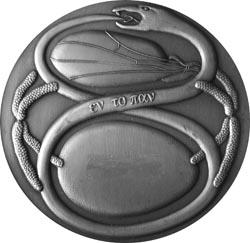
Wiener’s imprint was everywhere at the Macy Conferences on Cybernetics that took place between 1943 and 1954, little more than two decades before the Serbelloni Symposia. The Macy conferences give us a foretaste of the issues that would soon surface at Bellagio because they also included moments where the very premises of the collaborative enterprise were challenged—an opportunity existed to rethink and widen those premises, but then the opportunity vanished. N. Katherine Hayles has argued that the result of this vanished opportunity was an accepted dogma that information is the opposite of materiality. When that belief became general, as Hayles puts it, “information lost its body.”71 This narrowed notion of information gave rise to the negative side of posthumanity, Hayles argues, characterized by the separation of mind and body, subject and object, exemplified in Hans Moravec’s ambition to download the human brain idea into a computer.
Hayles points out that psychoanalyst Laurence Kubie had a disturbing effect on the Macy Conferences when he suggested that “every utterance is doubly encoded, acting both as a statement about the outside world and as a mirror reflecting the speaker’s psyche.”72 This unsettling suggestion—that scientists were less objective observers of a system outside themselves than they were subjective participants in a larger system in which they were implicated—led the participants in the first Macy conference to steer clear of the very notion of reflexivity. Not until second-order cybernetics came along, in the work of Heinz Von Foerster, did the idea of a feedback loop implicate scientists in the world they studied.
In the 1960s, cybernetics began to map a world in which the various parts of a system were mutually constituting and self-enclosed, and information was less important than processes of autopoeisis.73 First-order cybernetics had stressed homeostasis within a system; this notion extended from human beings to machines, through feedback loops of information. Second-order cybernetics introduced the idea of reflexivity into this system, in the sense that a system produces a feedback loop that generates a change that is then incorporated into the original system, changing it. This kind of reflexivity produces a sense of spiraling adaptations or changes, as the feedback loops back into the system, reconstituting it. And of course the originating system was the human experimental observer. Von Foerster’s volume Observing Systems launched the new perspective of second-order cybernetics, by applying “cybernetic principles to the cyberneticists themselves” so that “the observer of a system can himself be constituted as a system to be observed.”74 Moving from self-organization to emergence, third-order cybernetics would give us artificial life. But that is for a later part of the story.
The contribution of Marjorie Grene had a similar effect on the Second Serbelloni Symposium. Although unlike Kubie at the Macy Conferences Grene’s provocation challenged not by suggesting a return to subjectivity, but by endorsing a radical turn to the object world, the long-term effect of Grene’s insights was again to bring epigenetics into convergence with cybernetics. Although the two fields tried to speak together at Serbelloni, as Grene points out, they failed to achieve rapprochement.75 But it is very easy to trace a lineage from the epigenetic research of the early-twentieth century to the interventionist biotechnology and biomedicine of the twenty-first century. Simply consider the value-added chicken portion. As purveyed by McDonald’s and Burger King in the form of Whoppers™, chicken nuggets, and chicken “tenders,” this new industrial product has given rise to an epidemic of obesity and hypertension. As we shall see, it is also the site of a transfer of the epigenetic model from agriculture and medicine to cybernetics and robotics.
In the early 2000s, Burger King Corporation was facing a dip in revenues, and felt they needed to combat the image of the corporation as boring and unimaginative. So, their advertising agency, Crispin Porter + Bogusky, in collaboration with The Barbarian Group, a digital service marketing group now known for its work on Biomimetic Butterflies, created a solution: an advertising campaign known as “Subservient Chicken.”76 The advertisement aired in 2004: you logged on to a website that showed you a man in a chicken suit wearing a garter belt standing in a motel room. Then you typed in commands—Dance, Do the Hokey Pokey, Sleep—and it did them. And if you typed in obscene commands, the chicken just wagged its finger at you. “The overall effect was that the chicken seemed to be executing commands live.”77
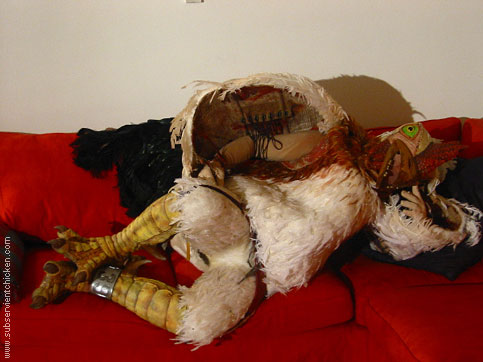
What was really happening? The Barbarian Group had created an interactive computer interface that used linguistic elements to search within, and execute, options from a data file containing videos of a man dressed in a chicken suit and garters performing one of nearly 400 short actions. People logged on to the website, emailed their commands to the chicken, then the computer program parsed the commands, selected the appropriate video clip from a database of potential commands, and played it for the computer user.78.
Business lore describes this as one of the earliest viral ad campaigns. When the project was almost finished, one of the creators emailed the link to 20 people, and by the end of the day the website had scored more than a million hits. Not only did the Subservient Chicken campaign rescue Burger King’s lagging revenues, the ad campaign earned some of the advertising industry’s most coveted awards: Best in Show at the One Show Interactive, the Yahoo Big Idea Chair Award, and the Grand Clio.79
Gender politics suffuse the Subservient Chicken campaign from its origins as a spoof of Internet porn to its “bizarre chicken outfit, spoofing other more salacious websites, [which] came complete with a garter belt” (designed by Stan Winston, who had previously worked on Aliens, Terminator, and Jurassic Park), to the secret stash of obscene commands that turned up in years to come, available to hackers.80 Little wonder that Slate blogger Seth Stevenson described it as a “viral sensation [that] involved a giant chicken in black lingerie, practicing ritual submission in front of a webcam in a seedy room.”81
My focus now, however, is on the way the Subservient Chicken campaign exploited a feeling we saw earlier with C.H. Waddington: the reluctance to realize that interaction is a two-way process. As the Barbarian Group explains, “[Subservient Chicken] was so creepy, weird, and well-executed that many people who visited the site thought that they were actually controlling this person in a chicken suit in real life.”82 Yet the corporation and its website were actually controlling the users: convincing them to visit it, convincing them that their commands were directly conveyed to the chicken; convincing them that they were making the chicken dance, or sing, or whatever. The website was shaping their computer use, their social networking, their purchasing decisions, and perhaps even the development of Internet advertising and even the development of the Internet itself, as it moved away from open access to branded, for-profit sites.
- Grene 1969: 61. [↩]
- Susan Squier, Poultry Science, Chicken Culture: A Partial Alphabet (New Brunswick: Rutgers UP, 2011). [↩]
- Paul A. Lombardo, Three Generations, No Imbeciles: Eugenics, the Supreme Court, and Buck v. Bell (Baltimore: Johns Hopkins UP, 2008). [↩]
- A. Strode, “Letter to H. Laughlin, requesting a deposition on hereditary feeblemindedness for the trial of Carrie Buck in Amherst, Virginia,” September 30, 1925. University of Albany, SUNY, Estabrook, SPE, SMX 80.9 Bx 1 folder 1-40. Available at http://www.eugeicsarchive.org. See Squier 2011: 191. [↩]
- Mississippi Chicken, dir. John Fiege, writ. Anita Grabowski and John Fiege (2007); Cedric N. Chatterly and Alicia J. Rouverol with Stephen A. Lord; “I was content and was not content”: The story of Linda Lord and the closing of Penobscot Poultry (Carbondale: Southern Illinois UP: 2000). [↩]
- See Asif Ismail, “Bad For Your Health: The U.S. Medical Industrial Complex Goes Global,” The Global Industrial Complex, eds. Steven Best, Richard Kahn, Anthony J. Nocella II, and Peter MacLaren (New York: Lexington, 2011): 211-232. [↩]
- Nikolas Rose, The Politics of Life Itself: Biomedicine, Power, and Subjectivity in the Twenty-First Century (Princeton: Princeton UP, 2007) and Adele Clarke, Disciplining Reproduction: Modernity, American Life Sciences, and “The Problems of Sex” (Berkeley: U of California P, 1998). [↩]
- S. Borwornpinyo, P.J. Brake, E. Mozdziak, and J.N. Petitte, “Culture of Chicken Embryos in Surrogate Eggshells,” Poultry Science 84 (2005): 1477-1482. [↩]
- Michael Anft, “Evolution, Evolved” Johns Hopkins Magazine 64.1 (2012). http://magazine.jhu.edu/spring-2012/evolution-evolved. [↩]
- To take one example of the way disciplinary boundaries constrain a full analysis of the impact of epigenetics, Rothstein et. al. acknowledge that “[a] growing body of evidence exists in animals, plants, and humans that epigenetic effects induced by many types of stimuli and interventions–including nutrition, endocrine disrupting chemicals, maternal care, and maternal stress–can be inherited transgenerationally and affect subsequent generations,” yet they point out that the FDA has yet to consider adequately the impact of epigenetics on the agriculture industry. They cite an article from the Washington Post concerning the FDA’s failure to regulate the sale of cloned meat: “In the end, facing the reality that epigenetics have never been a factor in assessing the wholesomeness of food, agency scientists decided to use the same simple but effective standard used by farmers since the dawn of agriculture: If a farm animal appears in all respects to be healthy, then presume that food from that animal is safe to eat.” Mark A. Rothstein, Yu Cai, and Gary E, Marchant, “The Ghost in Our Genes: Legal and Ethical Implications of Epigenetics” Health Matrix (Cleveland, Ohio: 1991); 19.1 (2009): 13. [↩]
- Barad 2007: 234. [↩]
- The image of a serpent swallowing its tail, or the Ouroboros, which according to H.J. Sheppard appeared prominently in astrological, Gnostic, and apocryphal texts. It is usually understood as symbolizing “the essential Unity of Matter and in particular the Work which had neither beginning nor end.” The image contains both the notion of a self-renewing life cycle and the notion of self-consumption: just as the snake sheds its skin and then swallows its own tail, so too the world renews itself until it experiences the heat-death of entropy. H.J. Sheppard, “The Ouroboros and the Unity of Matter in Alchemy: A Study in Origins” Ambix 10:2 (1967): 88. [↩]
- N. Katherine Hayles, How we Became Posthuman: Virtual Bodies in Cybernetics, Literature, and Informatics (Chicago: U of Chicago P, 1999): 2. [↩]
- Hayles 1999: 9-10. [↩]
- Hayles 1999: 11-12. [↩]
- Hayles 1999: 10. [↩]
- The Symposium included A.S. Iberall, a systems analyst, and Michael A. Arbib, an “Automata Theorist.” In the longer version of this work I consider their contributions to the symposium. [↩]
- http://barbariangroup.com/portfolio/burger_king_subservient_chicken. The list of awards is reported by Marketing Campaign Case Studies, which reports that this campaign launched on April 8, 2004. Marketing Campaign Case Studies, 6 Apr. 2008. http://marketing-case-studies.blogspot.com/2008/04/subservient-chicken. [↩]
- “Subservient Chicken Campaign,” Marketing Campaign Case Studies, 6 Apr. 2008. [↩]
- To see a bit of subservient chicken, go to: http://web.archive.org/web/20110426194400/http://www.bk.com/en/us/campaigns/subservient-chicken.html. See also http://usatoday30.usatoday.com/money/advertising/2004-11-05-cockfight_x.htm [↩]
- The list of awards is reported by the Marketing Campaign Case Studies blog: http://marketing-case-studies.blogspot.com/2008/04/subservient-chicken-campaign.html. Accessed 4/6/12. See also http://barbariangroup.com/portfolio/burger_king_subservient-chicken_campaign. [↩]
- For discussions of the Subservient Chicken costuming and set, see the Marketing Case Studies blog. [↩]
- Seth Stevenson, “The King’s Comeuppance: How the hottest ad agency of the aughts fell from grace,” Slate 23 Jan. 2012. http://www.slate.com/articles/business/branded/2012/01/crispin_porter_bogusky_how_the_hot_ad_agency_fell_from_grace_.single.html. [↩]
- http://barbariangroup.com/portfolio/burger_king_subservient_chicken [↩]

